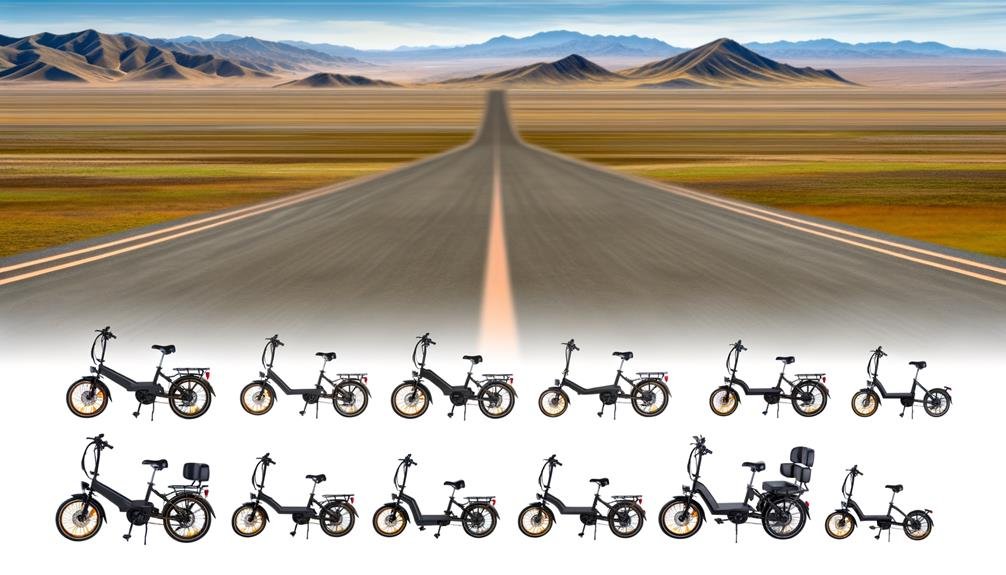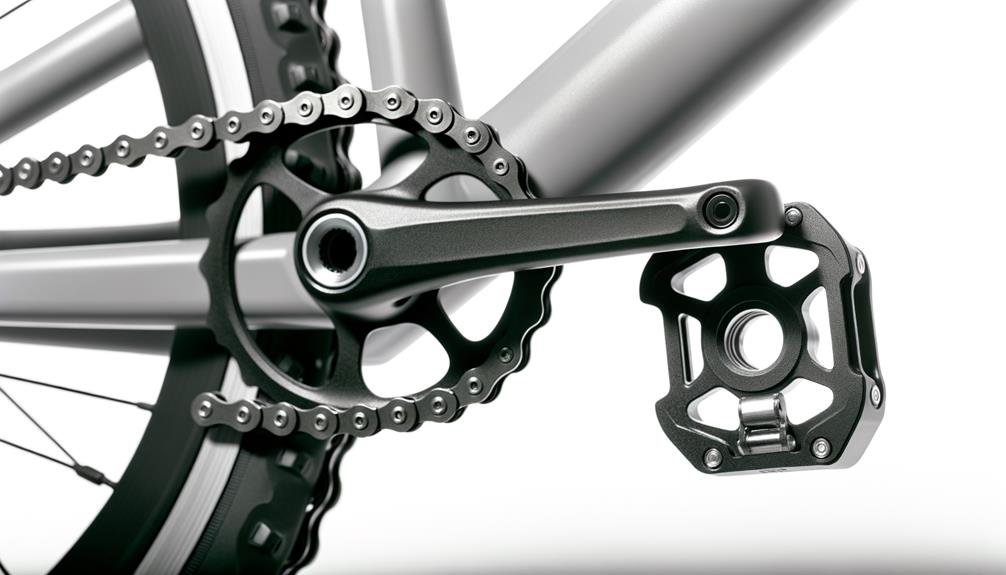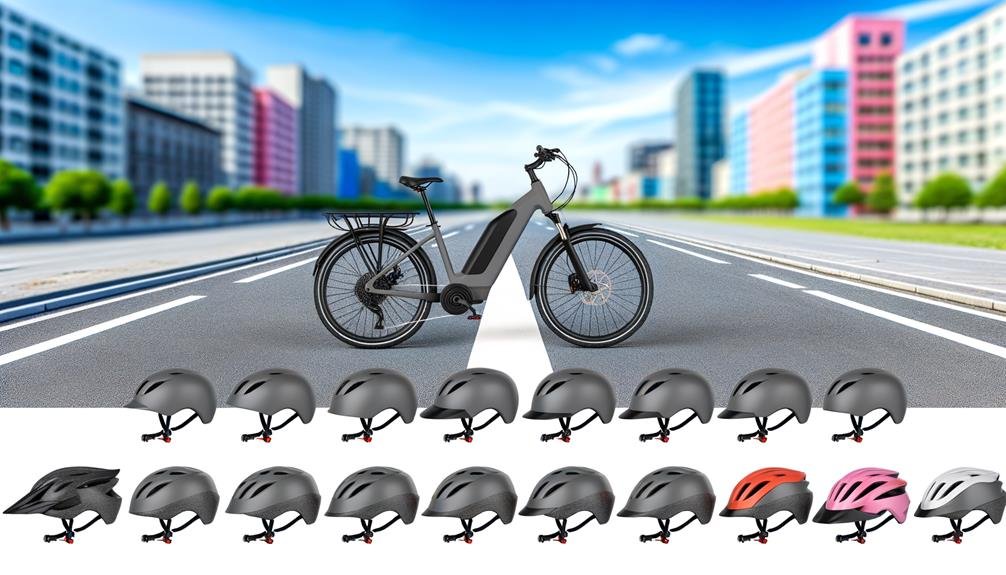Charles Miller is a veteran bike enthusiast with over 12 years of experience dealing with bikes as a mechanic. Despite immense love and expertise for...
Let's consider a scenario where we've just purchased an e-bike and are now looking for the best 18650 battery. We're searching for optimal performance, durability, and, of course, value for money.
But with so many options available, how do we know which one to choose? It's not just about picking a battery with the highest capacity; there are other factors to consider as well.
In the following discussion, we'll explore what these factors are and why they matter, thereby equipping ourselves to make an informed decision.
So, are you ready to embark on this journey of discovery?
Key Takeaways
- Battery capacity, measured in milliampere-hours (mAh), is crucial for determining the energy storage and range of an e-bike.
- Continuous discharge rating (CDR), measured in terms of continuous current (C), is important for high-performance applications like e-bikes.
- Compatibility with the e-bike's controller is essential to avoid performance issues and potential damage.
- Considering factors such as the reputation of the manufacturer, battery chemistry, features of the battery pack, voltage, budget, durability, and warranty period can help in selecting the ideal 18650 battery for an e-bike.
Understanding 18650 Batteries
When we delve into the technicalities of 18650 batteries, we must consider three critical factors: the battery's capacity, its continuous discharge rating, and its compatibility with the e-bike's controller. Understanding 18650 batteries is key to choosing the right battery for an e-bike.
The capacity of these lithium-ion battery cells, measured in milliampere-hours (mAh), is crucial. It determines the energy storage and, by extension, the range of the e-bike. A higher capacity means a longer ride before you'll need to recharge. We want you to feel the freedom of the long road, not the anxiety of a dwindling battery.
Next, we consider the continuous discharge rating, measured in terms of continuous current (C). This is vital for high-performance applications like e-bikes. We need a battery that can keep up with us, supporting our journey without faltering.
Lastly, ensuring the 18650 for ebike is compatible with the e-bike's controller is essential. Incompatibility can lead to performance issues and potential damage, disrupting our sense of belonging on the open road. When we form an e-bike battery pack, we ensure harmony, safeguarding our ride and our peace of mind.
With this understanding, we can make informed choices, fostering a stronger community of e-bike enthusiasts.
Choosing Your Ideal 18650 Battery
Armed with a solid understanding of 18650 batteries, let's now navigate the process of selecting the ideal battery for your e-bike.
Choosing your ideal 18650 battery is a technical task that calls for careful consideration of several key factors. Let's delve into these details.
The battery capacity, measured in milliampere-hours (mAh), is a fundamental aspect to consider. It directly influences the range and performance of your e-bike. Additionally, a high continuous discharge rating is crucial, particularly for high-performance applications such as off-road riding or racing. This rating ensures that the 18650 battery can support the power demands of your e-bike.
Compatibility with your e-bike's controller is vital to ward off performance issues and potential damage. Other factors to consider include the reputation of the manufacturer, battery chemistry, features of the battery pack, voltage, budget, durability, and warranty period. These elements should align with your specific needs and preferences.
Crucial 18650 Battery Factors
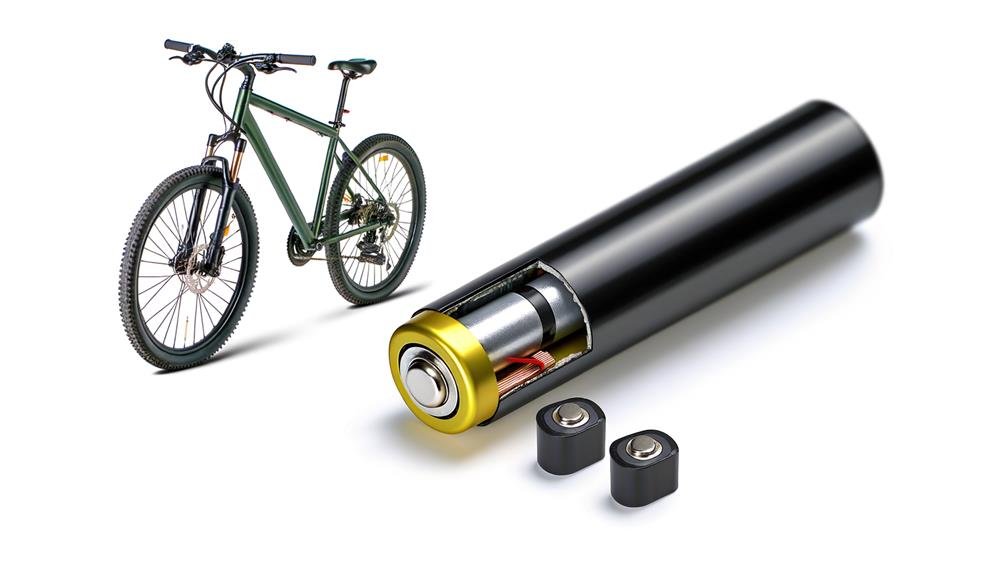
We must now examine the crucial factors that play a role in selecting an 18650 battery for your e-bike.
Firstly, understanding the battery's capacity, measured in milliampere-hours (mAh), is essential as it directly impacts the range of your e-bike.
Secondly, it's vital to consider the continuous discharge rating, as a higher C rating can support high-performance e-bike applications.
Understanding Battery Capacity
Before diving into the specifics of 18650 batteries, it's important to understand the fundamental factors that can impact their performance in e-bikes.
The first crucial factor we'll tackle is battery capacity. Understanding battery capacity is key to unlocking high power and longer range in your e-bike.
When choosing a 18650 for ebike, consider the battery's capacity, typically measured in milliampere-hours (mAh). A higher capacity indicates a longer range, meaning more distance covered before needing a recharge.
The Continuous Discharge Rating (CDR) is also vital. A higher CDR indicates the battery can sustain high power demands, such as off-road riding, without damage.
Importance of Discharge Rate
Having explored battery capacity's role in e-bike performance, let's now examine another vital factor, the discharge rate, which significantly impacts an 18650 battery's ability to deliver robust and consistent power. This rate, measured in continuous current (C), is critical for high-performance applications like electric bikes, particularly for off-road riding or racing.
Here's a table that succinctly explains key concepts:
| Factor | Importance | Example |
|---|---|---|
| Discharge Rate | Determines power delivery consistency | Higher for off-road riding |
| 18650 for Ebike | Must match power requirements | Samsung cells for high power |
| E-bike Batteries | Dictates performance and longevity | Choose based on intended use |
Selecting a 18650 battery with a high continuous discharge rating ensures your e-bike can handle power demands without overheating or performance issues. Thus, discharge rate is a crucial selection factor.
Diving Into 18650 Battery Chemistry
We're now turning our attention to the chemistry of 18650 batteries.
As we navigate through this topic, we'll unravel the significance of understanding battery chemistry and discuss the different types of 18650 batteries.
We'll also guide you in choosing the right 18650 battery for your e-bike, considering all necessary factors.
Understanding Battery Chemistry
Often, it's the intricate chemistry of 18650 batteries that determines their suitability for e-bikes, affecting key factors like capacity, discharge rate, and compatibility with the bike's controller. Understanding battery chemistry is crucial when selecting the right battery for your e-bike.
| Factor | Importance | 18650 Battery Advantage |
|---|---|---|
| Capacity | Determines the amount of energy a lithium battery can store | High capacity for extended range |
| Discharge Rate | Indicates the battery's ability to provide current without damage | High discharge rate ideal for e-bikes |
| Compatibility | Ensures the battery works correctly with the bike's controller | Wide compatibility with different controllers |
Types of 18650 Batteries
Diving into the chemistry of 18650 batteries, it's crucial to understand the different types available, each with unique characteristics that influence their performance, capacity, discharge rating, and compatibility with e-bike controllers. The heart of these batteries lies in their cells, where power is stored and released, creating higher voltage for your e-bike.
- Lithium-Ion Cells: Known for their high energy density and long life.
- High-Capacity Cells: These provide a longer range, making them ideal for those lengthy rides.
- High Discharge Cells: Perfect for high-performance applications, such as racing or off-road e-biking.
Each type of battery varies in its capacity and power, so it's vital to choose one that fits your e-bike's requirements and your riding style.
Choosing the Right 18650
Having explored the different types of 18650 batteries, it's time to focus on how to pick the right one, carefully analyzing factors like battery chemistry, capacity, continuous discharge rating, and compatibility with your e-bike's controller. We'll help you find the best battery that perfectly meets your e-bike's demands.
Selecting a higher capacity 18650 for ebike can offer more range, but remember to consider the continuous discharge rating too. It's essential to match this with your e-bike's power requirements.
Keep an eye on compatibility – your chosen battery must work seamlessly with your e-bike's controller and BMS (battery management).
Lastly, consider the battery charger: it should complement the battery's chemistry and capacity to ensure optimal charging and longevity.
Comparing 18650 Battery Manufacturers
When comparing 18650 battery manufacturers, we prioritize renowned names like Panasonic, LG, and Samsung due to their reputation for producing high-quality cells. These giants in the industry have consistently delivered reliable and efficient batteries, which are crucial for powering e-bikes.
These manufacturers focus on producing battery packs with impressive features. Most notably, they come with a robust battery management system (BMS) that ensures optimal performance and longevity. However, it's not just about the brand name; it's crucial how the packs are made.
Consider the following aspects when comparing manufacturers:
- Battery chemistry: Some batteries use iron phosphate, known for its exceptional longevity and safety.
- Capacity and continuous discharge rating: These factors determine how long the battery will last and its power output.
- Compatibility with the e-bike's controller: Ensure the battery you select aligns with your e-bike's specifications.
Maintaining Your 18650 Battery
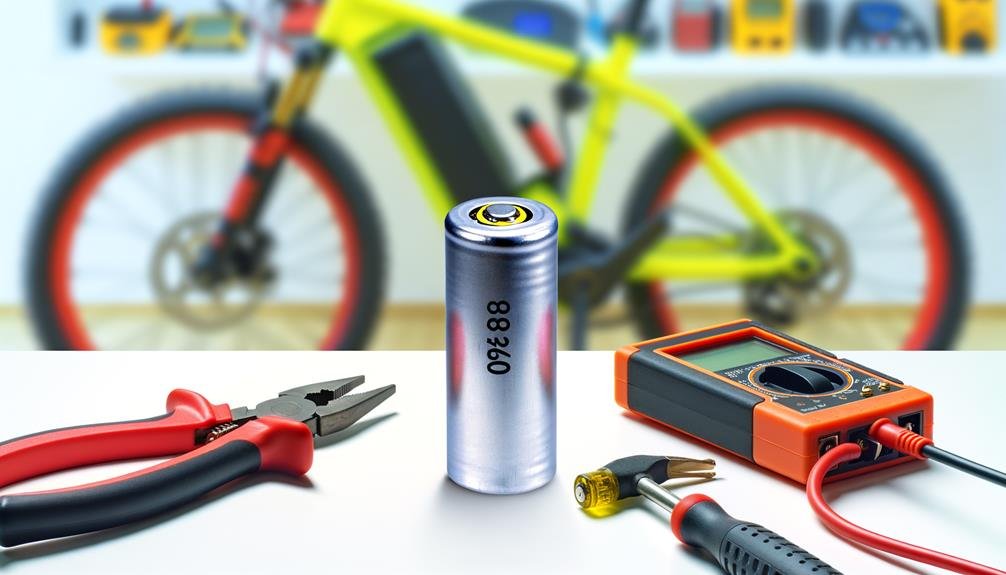
Beyond selecting the right manufacturer and considering battery characteristics, it's equally crucial to properly maintain your 18650 battery to ensure optimal performance and longevity. Maintaining your 18650 battery isn't complex, but it does require a keen eye and adherence to best practices.
Regularly check your battery's capacity (mAh). A higher capacity equates to more energy, longer range, and longer charge and discharge cycles. Keep in mind desired range and charging time when selecting your battery today.
Watch for any signs of a short circuit. Short circuits can damage your battery and your e-bike. So, always ensure compatibility with your e-bike's controller, checking specifications and requirements diligently. This prevents performance glitches and potential damage.
Use pure nickel strip for connections to lower resistance. This enhances the battery's performance. We recommend purchasing cells from trustworthy sources and considering professional spot welders for connecting cells without generating excessive heat.
Safety precautions are paramount. If you're unsure about anything, seek professional assistance. Prioritize proper storage, cleaning, and inspection of your battery. With these steps, you'll enjoy the full benefits of your 18650 battery for a longer period.
Frequently Asked Questions
What Are the Best Cells to Use for Ebike Battery?
We recommend cells with high durability, fast charging speed, and long battery lifespan. Consider cost analysis and safety features. Brands like Panasonic and Samsung offer reliable options. Always prioritize compatibility with your ebike's specifications.
What Is the Best 18650 Battery for Ev?
We'd recommend a high-capacity 18650 battery for its longevity and fast charging speed. Consider cost, safety features, and environmental impact. Brands like Panasonic or Samsung offer reliable, cost-effective options with good safety and environmentally-friendly features.
What Are the Best Cells for DIY Ebike Battery?
We'd recommend cells with high longevity and efficiency. Prioritize DIY safety measures, evaluate cost-effectiveness. Preferred manufacturers include Panasonic, Samsung, Sony, and LG. Remember, good batteries enhance your e-bike's performance and lifespan.
What Batteries Are Best for Ebike Conversion?
We'd suggest high-capacity 18650 batteries from reputable manufacturers. They boost ebike performance, offer longevity, and are cost-effective for conversions. Remember, safety measures are crucial and they also have a lower environmental impact.
Conclusion
In wrapping up, we've delved deep into the technicalities of choosing the perfect 18650 battery for our e-bikes. We've dissected the importance of capacity, voltage, and battery chemistry.
We've sifted through manufacturers, keeping an eye on reputation and warranty. Now, armed with this knowledge, we can tackle the task of battery selection with confidence and precision, ensuring our e-bikes are powered by nothing but the best.
Remember, a well-chosen battery can be a game-changer for our e-bike experience.

Charles Miller is a veteran bike enthusiast with over 12 years of experience dealing with bikes as a mechanic. Despite immense love and expertise for his Tacoma, he rides his Trek Ebike more. Anytime you meet him, you’ll either hear him talking about Bikes, or writing about all things bikes and cars on this blog.
More Posts
